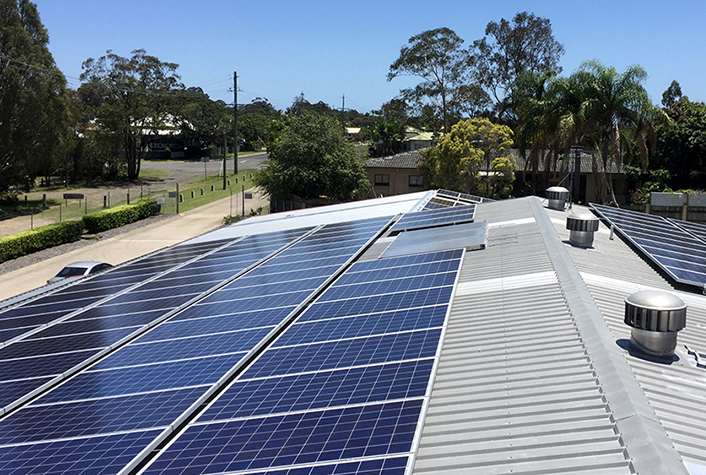A&M engineers look at connecting solar power to Texas energy grid

Scientists are continuously looking for alternatives to fossil fuel-based power plants to diminish the adverse effects of fossil energy sources on the environment and to also build reliability. Researchers at Texas A&M University are studying the viability of solar photovoltaic (PV) grid-tied systems on rooftops to fill that need.
Fadhil Al-Aboosi, a researcher with the Texas A&M Engineering Experiment Station’s Gas and Fuel Research Center, is leading a team studying the adoption of solar PV systems on building rooftops in countries that have a good solar energy potential, even if they are oil or gas producers. PV systems are composed of one or more solar panels combined with an inverter and other electrical and mechanical hardware that use energy from the sun to generate electricity.
“We want to mitigate the negative impact of fossil energy sources on the environment, to avoid using lands that can add more cost and may be used for other purposes, such as agricultural and urban activities,” Al-Aboosi said. “This will address the energy and environmental challenges of the rapid growth of the building sector.”
Al-Aboosi said the prospects of the implementation of a PV system on building rooftops in Texas was studied theoretically for the first time to overcome the lack of performance behavior data of this technology, specifically for the selected location.
“The importance and accuracy of results comparing other previous research that has been carried out in the same direction is obtained from the comprehensive analysis of the system performance,” Al-Aboosi said. “We considered technical, economic and environmental criteria, solar irradiance intensity, two modes of single-axis tracking, the shadow effect and the PV cell temperature impact on system efficiency.”
The results of their study, “Preliminary Evaluation of a Rooftop Grid-Connected Photovoltaic System Installation under the Climatic Conditions of Texas,” are detailed in the journal Energies.
The evaluated parameters of the proposed system include energy output, array yield (the ratio of daily, monthly, or yearly direct current energy output from a PV array), final yield, array and system losses, capacity factor, performance ratio, return on investment, payback period, levelized cost of energy and carbon emissions.
According to the overall performance results of the PV system, which researchers propose to be installed on the eastern buildings of the Texas A&M campus, Al-Aboosi said they found this to be a technically, economically and environmentally feasible solution for electricity generation and could play a significant role in the future energy mix of Texas.
“The result of the comparison for the proposed PV system with other PV systems located in different sites around the world showed that their performance does not only depend on solar radiation intensity, but the operational and climatic conditions should be considered for any site that is selected to install the PV system,” he said.

